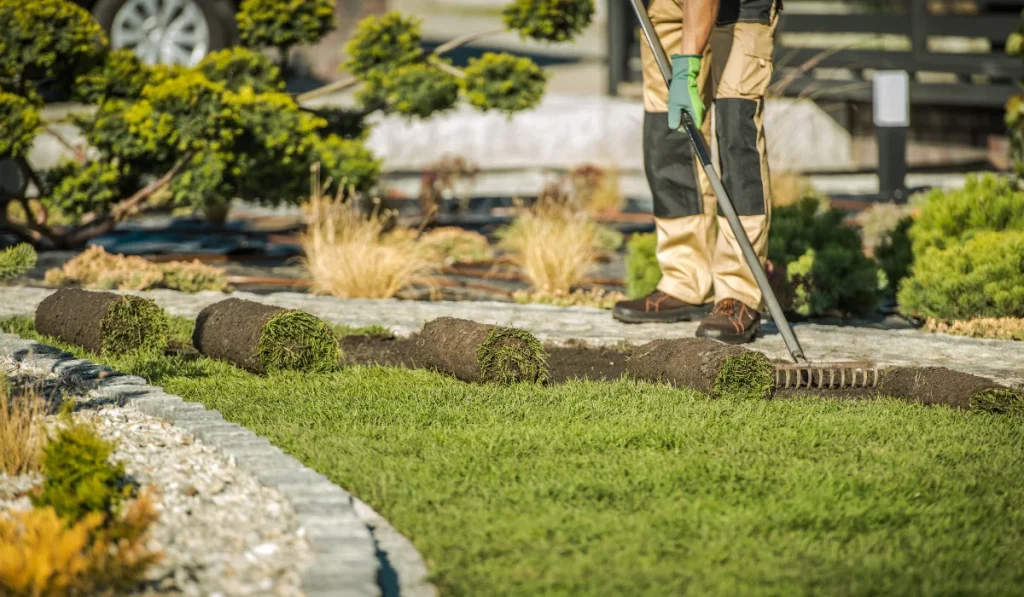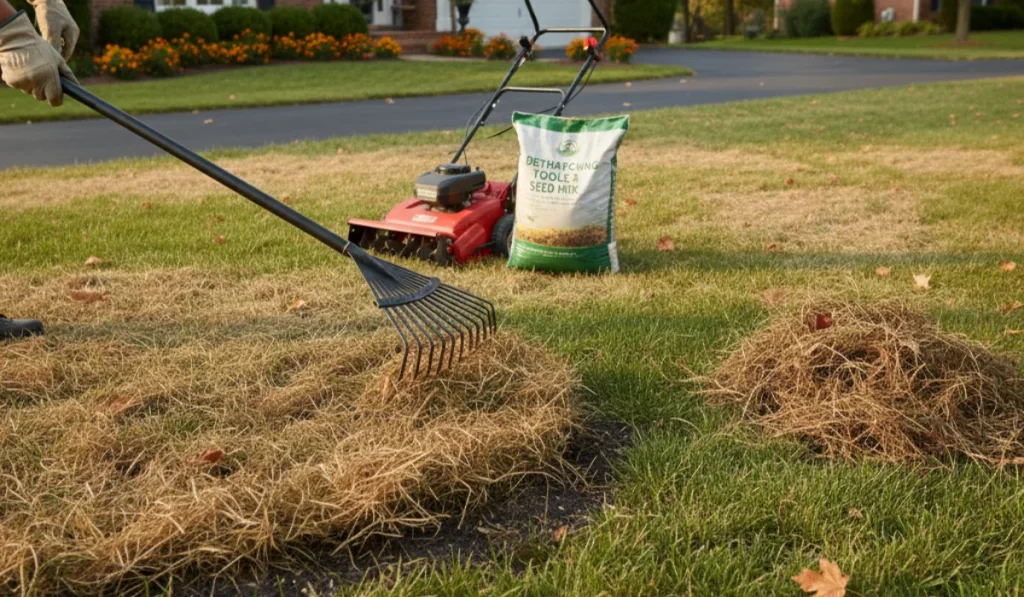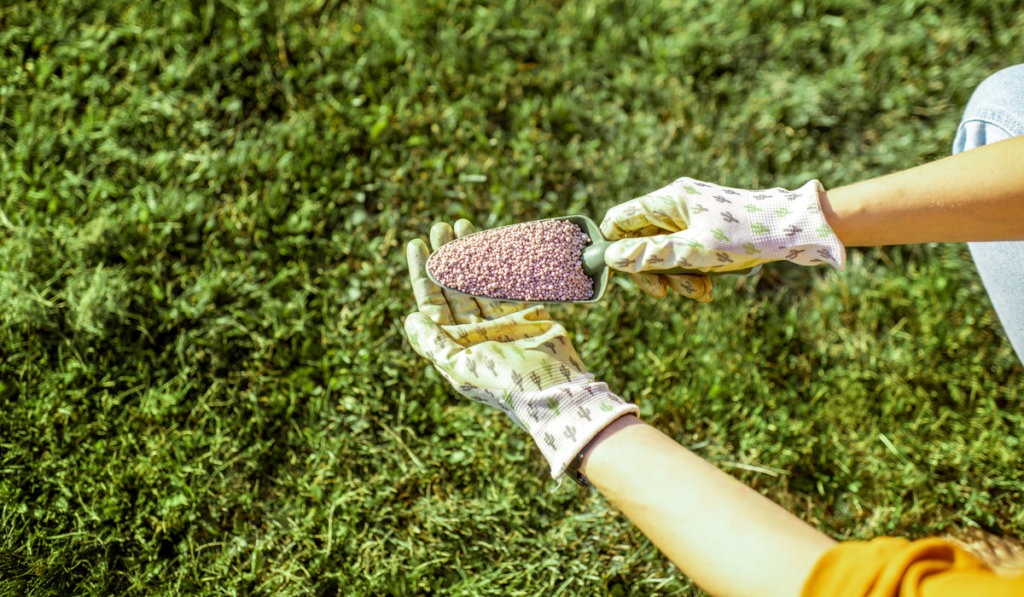Laying down fresh sod can transform a patchy lawn into a lush, green paradise, but accurate measurements are crucial to avoid wasting time and money. To get started, you need to know your lawn’s area by measuring the length and width of each section.
Keep reading to discover sod care tips and techniques that will help you achieve the perfect lawn.
Key Takeaways
- Simple formulas, such as Length x Width for squares and rectangles and π (3.14) x radius² for circles, help measure yard shapes accurately.
- Irregular shapes can be split into smaller, regular shapes like squares or triangles to make measuring easier.
- Non-grass areas like driveways and patios should be subtracted from the total yard area to avoid wasting sod.
- A sod calculator can help by combining your measurements and telling you how much sod you need.
How to Measure Basic Shapes in Your Yard
Measuring for sod requires understanding specific shapes in your yard to calculate accurate square footage. Different shapes need unique formulas for precision.
Square and Rectangle
Squares and rectangles are the easiest shapes to measure.
For these, use the formula Length x Width.
If a yard section is 20 feet long and 15 feet wide, the square footage is:
20 feet x 15 feet = 300 square feet.
Keep dimensions consistent—use feet for all measurements. This is important for larger projects, like a golf course.
Circle
To measure a circle, first find the radius (distance from the center to the edge).
Use the formula π × radius squared.
If the radius is 8 feet, the calculation would look like this:
3.14 x (8 feet)^2 = 3.14 x 64 = 200.96 square ft.
For pi, use 3.14.
Trapezoid
Trapezoids have two parallel sides of different lengths. Measure both sides and the height (distance between them).
The formula is (Base1 + Base2)/2 x Height.
For example, if the bases are 10 feet and 6 feet, and the height is 4 feet:
([10 ft + 6 ft] / 2) x (4 feet) = 8 ft x 4 ft = 32 square ft.
Make sure to measure the bases parallel to each other. For more extensive projects, knowing the area in square yards might be useful.
Triangle
Triangles need the base and height for measurement.
The formula is (Base x Height) / 2.
If a triangle’s base is 10 feet and the height is 5 feet:
(10 ft x 5 ft) / 2 = 50 square ft / 2 = 25 square ft.
Ensure straight measurements for accuracy.
Irregular Shapes
Irregular shapes can be tricky. Break them into smaller, regular shapes like squares, rectangles, and triangles. Measure each separately, then add their areas together.
For example, an L-shaped yard could be split into two rectangles. Calculate the area of each rectangle and then add them to find the total area.
This method provides a more accurate total square footage. Providing a visual layout can help with complex shapes, especially for larger lawns that require rolls of sod for coverage.
How to Adjust for Non-Grass Areas
When measuring sod installation, accounting for non-grass areas is crucial. This helps you avoid wasting money on excess sod and ensures accurate coverage. They often include driveways, walkways, patios, and flower beds.
To start, you’ll need a tape measure. Begin by measuring the width and length of each non-grass area. Maintain a straight line for accuracy.
Next, calculate the area of each space. For rectangular areas, multiply the width by the length. For circular sections, square the radius and multiply by π (3.14).
Make a list of these measurements. Here’s an example:
| Non-Grass Area | Length (ft) | Width (ft) | Area (sq ft) |
|---|---|---|---|
| Driveway | 20 | 10 | 200 |
| Walkway | 10 | 3 | 30 |
| Patio | 15 | 15 | 225 |
Sum up the total area of all non-grass parts. Subtract this from the total area where you’ll be laying sod.
This adjusted measurement will give you the amount of sod needed.
How to Use a Sod Calculator
Using a sod calculator simplifies the process of determining how much sod you need for your new lawn.* Here’s how to do it:
- Proceed by clicking the link that will take you to the sod calculator page.
- Break down your lawn into simpler shapes like squares, rectangles, or circles. Use a measuring tape to find the length and width.
- Input these measurements into the sod area calculator.
- Calculate the total area with the sod calculator. It will automatically compute the total area for each shape you entered.
- Total sod required. The tool will combine these areas to give you the total area and the amount of sod you’ll need.
Alternatively, you can use Google Maps for this task. It is quite handy and straightforward.
To measure the distance between two points:
- On your computer, open Google Maps.
- Right-click on your starting point.
- Select Measure distance.
- To create a path to measure, click anywhere on the map. To add another point, click anywhere on the map.
- At the bottom, you can find the total distance in miles (mi) and kilometers (km).
- Tip: To move a point or path, click and drag it. To remove a point, click it.
- When finished, on the card at the bottom, click Close.
*We always recommend measuring your yard manually. Sod calculators and Google Maps are a helpful tool, but should not be your primary method of measuring.
Tips for Measuring Your Yard Accurately for Sod
When getting ready to lay down new sod, the first thing you must do is measure your yard accurately. For homeowners like you, here are some tips to help before ordering sod:
- Divide your yard into sections: Break down your yard into smaller, manageable shapes like rectangles and squares.
- Calculate the area: For each section, multiply the length by the width to get the square footage. Add up all the areas to get the total square feet of sod.
- Consider obstacles: Don’t forget to subtract the space taken up by gardens, patios, and sprinkler systems from your total square footage.
- Account for slopes: If your yard isn’t flat, take extra measurements to cover these uneven areas properly or call professional help to ensure accuracy.
- Consult a sod calculator: Many online tools can help estimate the amount of sod you’ll need based on your square footage.
- Order slightly more than needed: Add 3-5% to your total area to account for mistakes and cuts.
- Know your sod: Different types of sods, like bluegrass, might come in various roll sizes. Check with your sod farm for what’s available for pickup.
- Pallet and roll calculations: Each pallet (~60 rolls) usually covers around 480-600 square feet. Figure out how many pallets of sod you need by dividing the total square footage by 450.
- Hire a lawn care expert: Professionals have the experience and expertise not only in measuring your yard but also in knowing how to install sod correctly for long-lasting results.
Frequently Asked Questions
When measuring sod for your DIY lawn care project, knowing the exact square footage and the amount of topsoil required are crucial steps.
What’s the best way to figure out the square footage for new sod?
To calculate the square footage, use a tape measure to get the length and width of the area. Multiply these two measurements. For irregular shapes, break them into smaller rectangles or triangles, then add up the area of each section.
How do you calculate the amount of rolls or pieces needed for a sod project?
Each standard roll covers about 8-10 square feet. Divide the total square footage of your area by 10 to find out how many rolls you’ll need. For more precise calculations, account for possible mistakes and order a bit extra.
How much topsoil is necessary before laying down new sod?
You generally need about 4-6 inches of topsoil. Every 1,000 square feet equals roughly 3-5 cubic yards of soil. Make sure the layer is even and compact to provide a good foundation for the sod.



